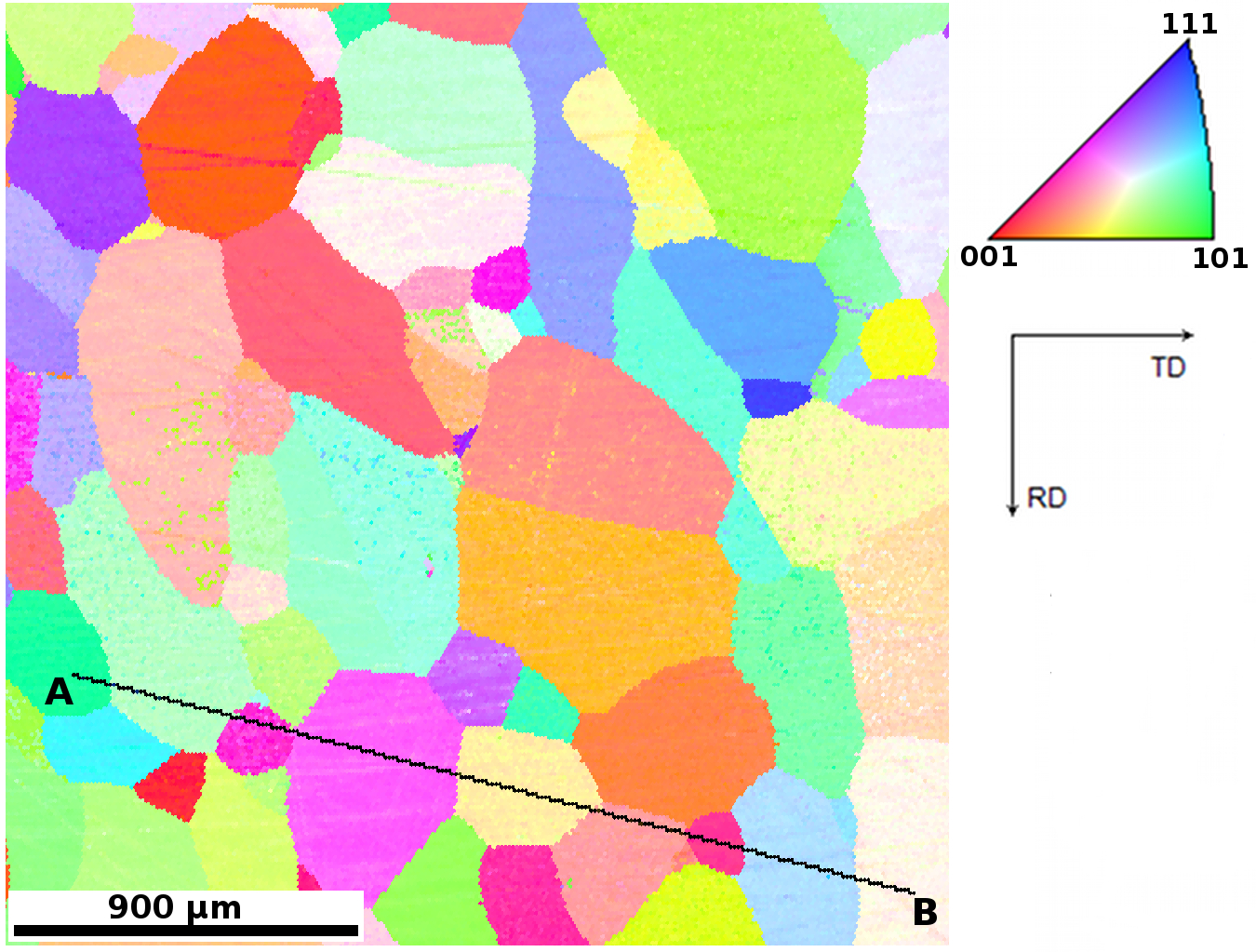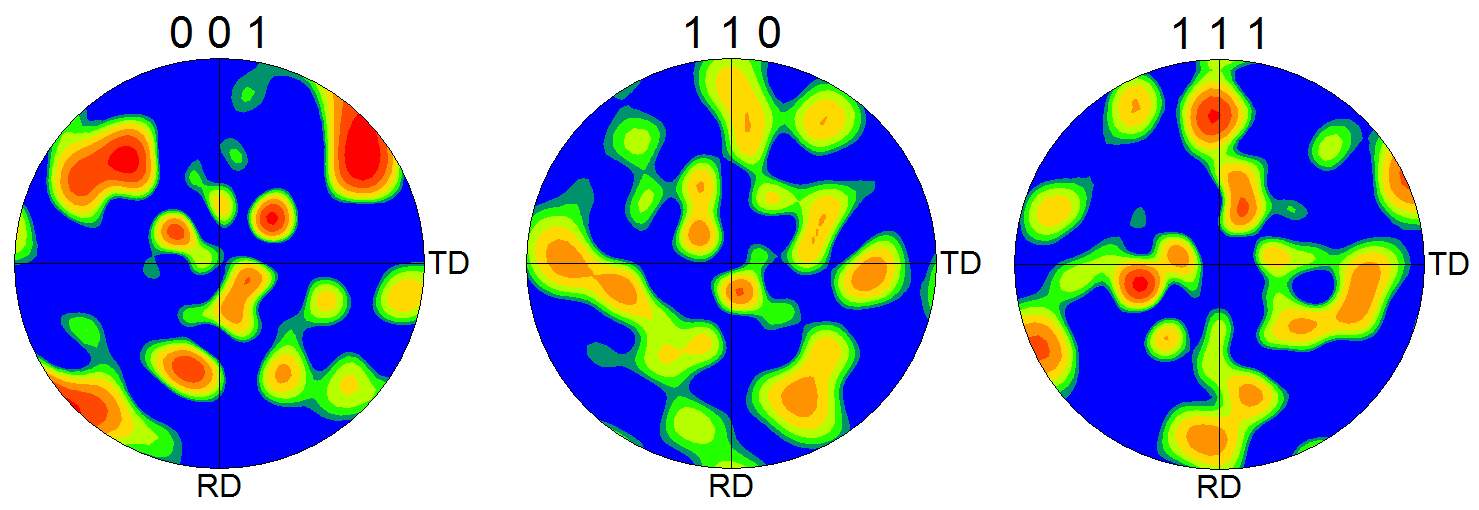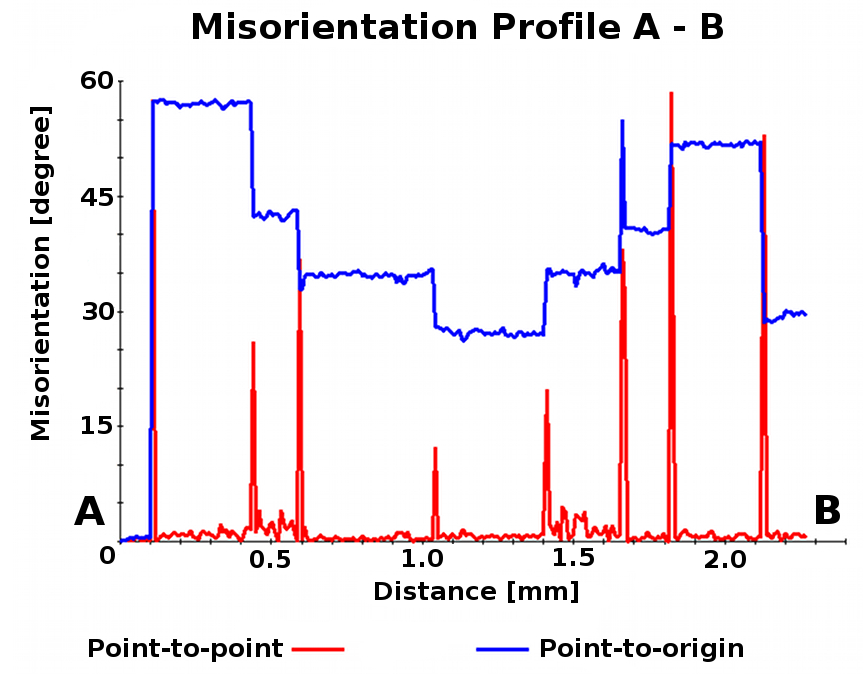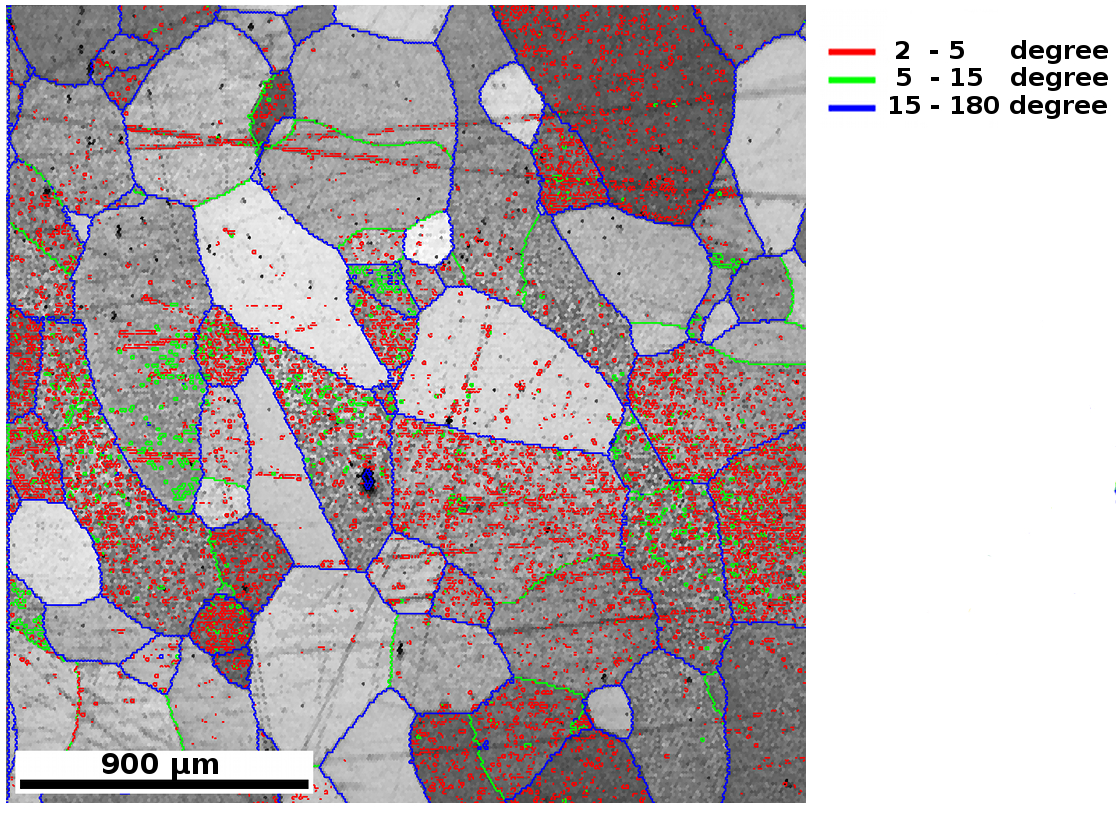EBSD (electron-backscatter-diffraction)
EBSD (Rückstreuelektronenbeugung) erlaubt die Bestimmung von kristallographischen Orientierungen. Unterschiedliche Kornorientierungen innerhalb einer Phase sowie Korngrößen und Fehlorientierungen im kristallographischen Gitter zweier benachbarter Körner können mit hoher Auflösung bestimmt werden. Unterschiedliche Phasen können bei gleicher Zusammensetzung charakterisiert werden.
Es handelt sich dabei um eine oberflächensensitive Methode; die Signale stammen aus einer 10-20 nm dicken oberen Schicht der Probe, was eine gute Probenvorbereitung erfordert.
DigiView 4 EBSD Detektor (EDAX AMETEK)
- hochafgelöste Abbildungen (1392 x 1040 Pixel, 1.4 Megapixel)
- maximal 150 indizierte Muster pro Sekunde möglich
- in Kombination mit dem ESEM-Modus können nicht-leitende Proben untersucht werden
- OIM v5 Software zur Datenerfassung und Evaluierung
Das folgende Beispiel zeigt eine Aluminium-Probe. Die Messungen wurden bei einer Beschleunigungsspannung von 20 kV und einem Strom von 23 nA auf einer Fläche von 2500 x 2500 µm angefertigt. 72 395 Punkte wurden mit einer Rate von 10.7 Punkten/Sekunde analysiert. Bilder und Daten wurden von J. Dake, Institut für Mikro-und Nanomaterialien der Universität, angefertigt.




